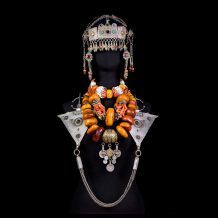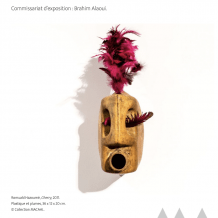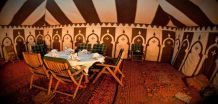
A recreation of a pre-Islamic culture is set to be on display during the 2022 World Cup in Qatar. Skilled female, Moroccan weavers from the Atlas Mountains have implemented their skills to contribute in creating a Majlis on display for the 2022 World Cup. Morocco applauds its history of female weavers who helped make this special project possible.
Majlis were traditionally made of bamboo or constructed from light materials such as wood and woven cloth. They were once an integral part of pre-Islamic Arab society.
Majlis were traditionally made of bamboo or constructed from light materials such as wood and woven cloth. They were once an integral part of pre-Islamic Arab society. The Majlis, “lounge” or “council” was a sitting place where community members gather to discuss local events and issues, resolves problems, exchange news, pay condolences, hold wedding receptions, socialize and be entertained. The simplicity of its design allowed them to be quickly set up, broken down, and transported according to the needs of nomadic Arab tribes. The Majlis were formally added to the UNESCO Intangible Cultural Heritage list in 2015.
The term “Cultural Heritage” has changed content considerably due to the instruments developed by UNESCO. Cultural Heritage does not end at monuments or objects. It is also defined now as “traditions” or “living expressions inherited from ancestors and passed on to descendants”, such as oral traditions, performing events arts, social practices, rituals, festive, knowledge and practices concerning nature and the universe or the knowledge and skills to produce traditional crafts.

The Majlis embodies all of these qualities taking in consideration that its construction has been passed down from generation to generation amongst the ancient Arab people. Making the recently multinational Majlis exceptional is that it was made collectively in “a combined effort by craftspeople from Morocco, Colombia and Italy.” The project initially designed by Simon Velez and Stefana Simic, two award winning architects from Colombia. The bamboo frame for the Majlis was constructed there. However; the pair sought to recruit help from Morocco for the woolen panels that would form the walls.
The Moroccan craftsman Ahmed Chmitti teamed up with a group of women who specialized in weaving from the small city of Boujaad to cover the Majlis walls and roof with wool woven. The carpet inside was made by the Ain Leuh Women’s Weaving Cooperative.
After completion, the project was shipped in individual pieces to Venice, Italy, to be put on display at the 2021 Venice Architectural Exhibition under the theme of: “How will we live together?”
Velez told news source Designbloom that the artists were “trying to make a place for learning…from many places of the world, and for many different ages.”
After displaying in Venice, the Majlis will do a brief global tour before stopping in Qatar for the 2022 World Cup.





